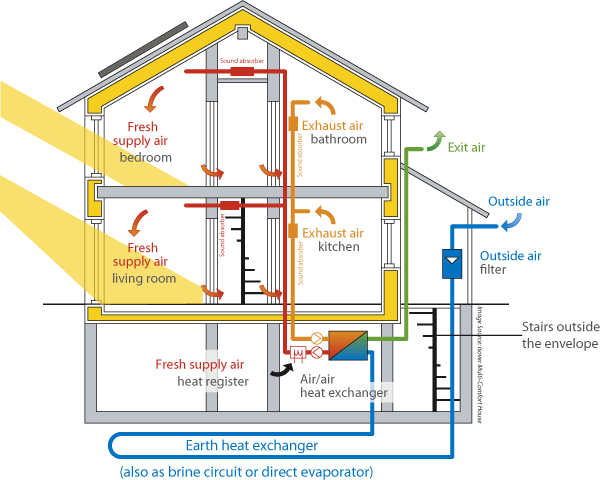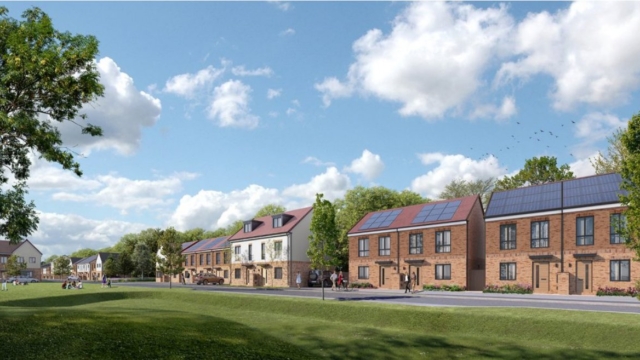- Details
- Hits: 8852
What are Passivhaus Standard Requirements?
The requirements for a home to meet Passivhaus Standards. The Passive House Institute detail these as follows:
- Space Heating Energy Demand should not exceed 15 kWh per m2 of net living space per year.
- The Renewable Primary Energy Demand, the total energy to be required for all of your home’s domestic applications, must not exceed 60 kWh per m2 per annum.
- For Air-tightness, a maximum of 0.6 air changes per hour is allowed at 50 Pascals pressure (ACH50). This will be verified with an onsite pressure test.
- Thermal comfort should be met for all living areas for energy-efficient houses in both summer and winter seasons. This shouldn’t exceed 25°c for any more than 10% of the hours in a year.
- The "fabric first" concept of making sure the property is heavily insulated, is paramount - and generally to a much higher standard than current UK Building Regulations.
See our detailed blog regarding Passive House Standards as defined in the US/UK CLICK HERE
The image indicates the mechanical ventilation system [red and blue circuits] - in this example the fresh incoming air has been routed under the basement to pick up some 'heat' from the earth [in the winter] and to cool this same air in the summer - "Earth Heat Exchanger" A further method to reduce the total energy requirement of this design.
Also indicated is the summer sun entering the building via the windows, with suitable shading {roof overhangs] to prevent over-heating in the summer. However in winter, the lower sun will penetrate deeper into the structure, thus giving a valuable solar gain in these colder months.
The Basement will also be used for rainwater harvesting - to be filtered and used for flushing toilets and even bathing and showering etc. Thus reducing the cost of drinking water into the property.
- Details
- Hits: 8007
 Octopus Energy and a housebuilder have entered into a partnership to roll out the UK’s first homes to guarantee residents Zero Energy Bills. The construction of the properties was first announced in February of this year but now it has been revealed that Octopus Energy will be providing a bespoke tariff as part of the project.
Octopus Energy and a housebuilder have entered into a partnership to roll out the UK’s first homes to guarantee residents Zero Energy Bills. The construction of the properties was first announced in February of this year but now it has been revealed that Octopus Energy will be providing a bespoke tariff as part of the project.
These homes will come equipped with an air source heat pump, solar panels and battery storage technology. Alternatively they could also be additionally “powered by wind turbines and bio-methane powered CHP for district heating systems. Either way Octopus gets embedded power supplies with zero capital costs.
These energy efficient technologies will combine to provide “free”, clean energy around the clock, with Octopus Energy providing a tariff specifically for those living there. Octopus will also sell on the ‘surplus’ [over and above any battery storage] electricity so generated to its customers – as low cost power – thus averaging down their cost of electricity into the bargain
How many of the homes
There is no real limit to numbers in this important ‘marriage’ of construction and Energy partnership, just the finance and will power to encourage such schemes as ‘normal’.
Many of these homes will be “zero-carbon (dioxide)” in operation, meaning they can generate their own sources of energy {heating, Hot Water and Electricity], helping to reduce emissions produced by ‘normal’ domestic utilities such as electricity and heating. These concepts can also be extended to Commercial and Industrial properties.
